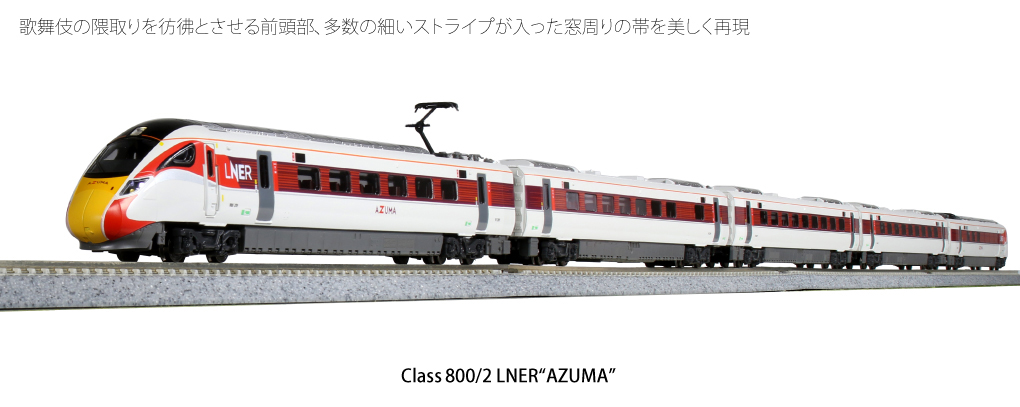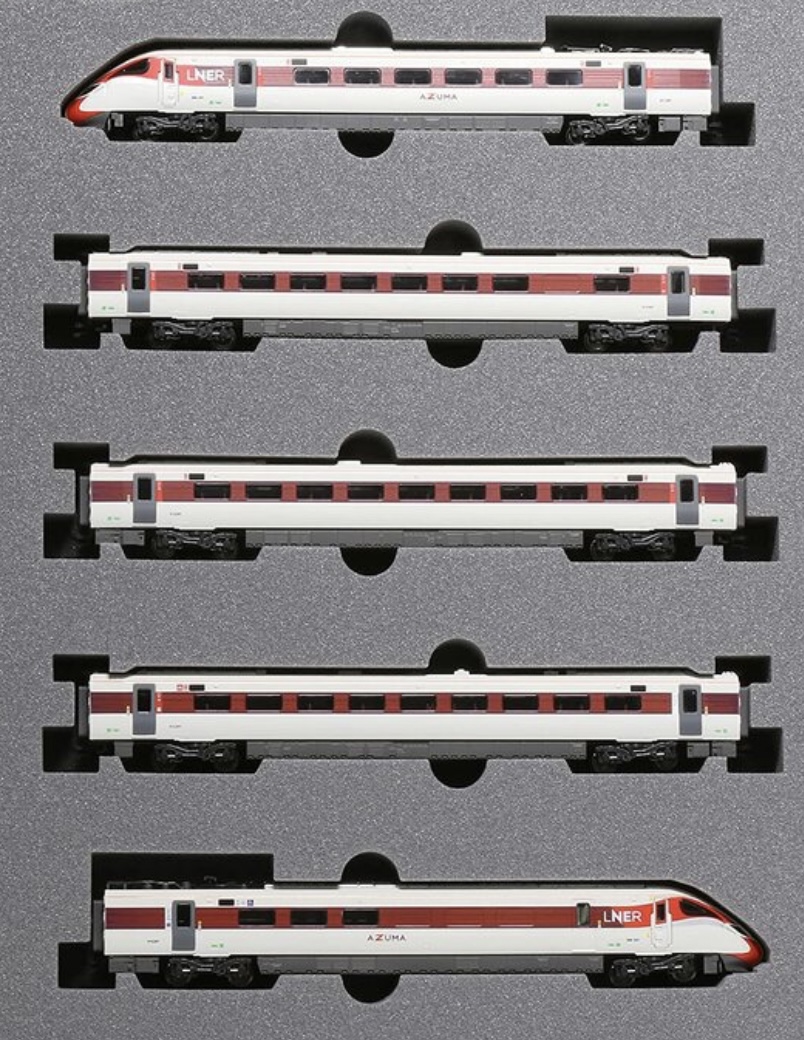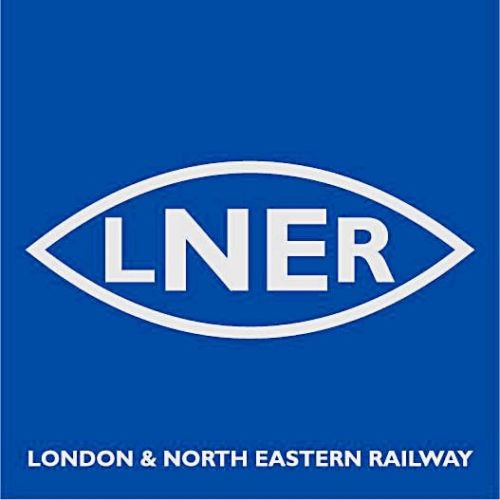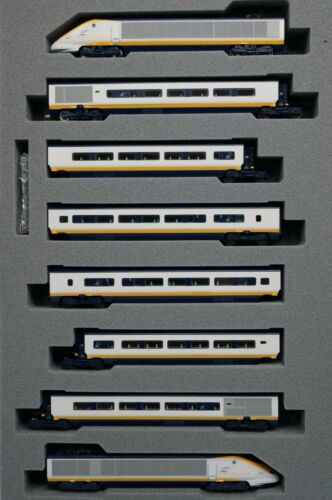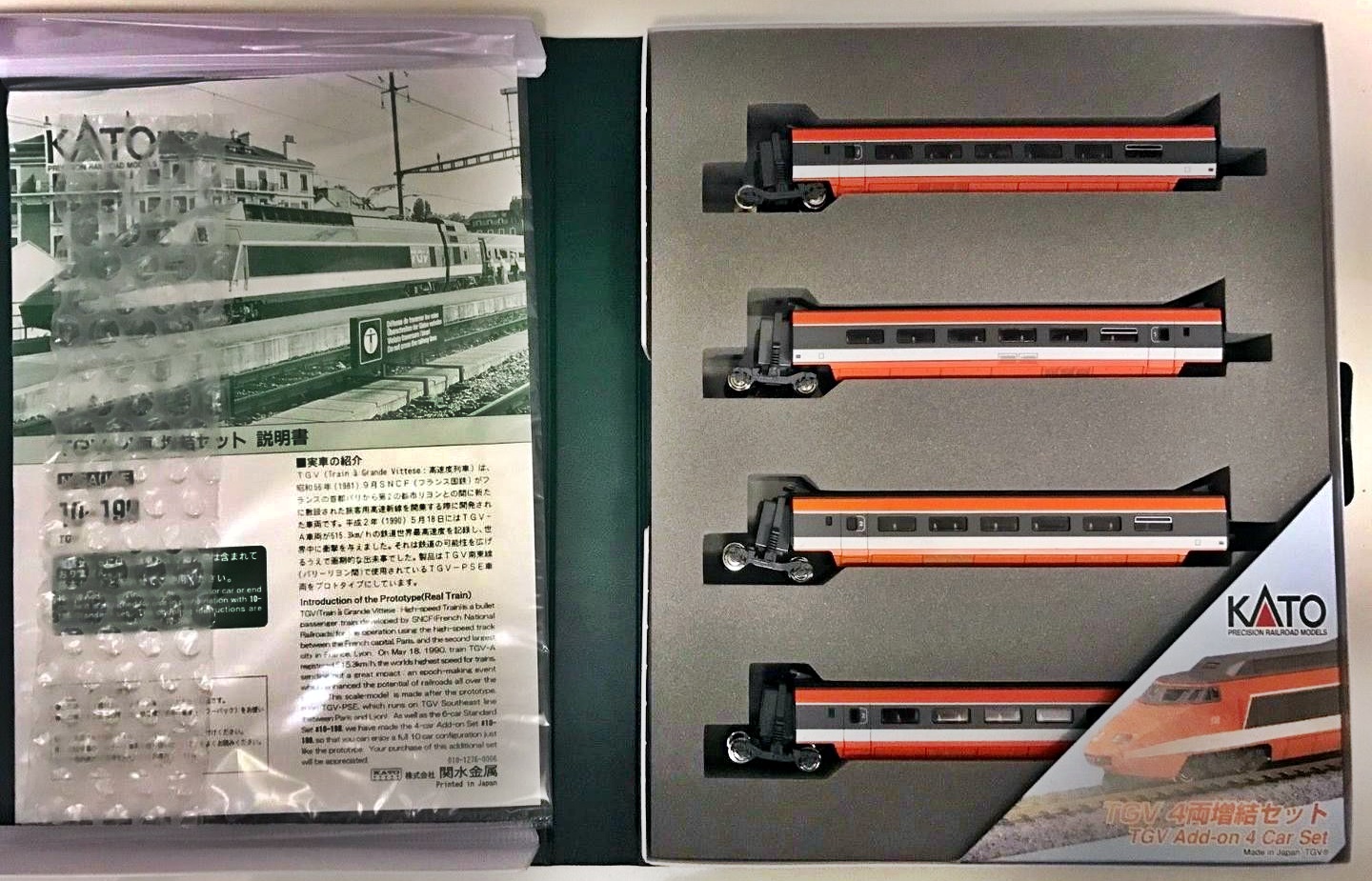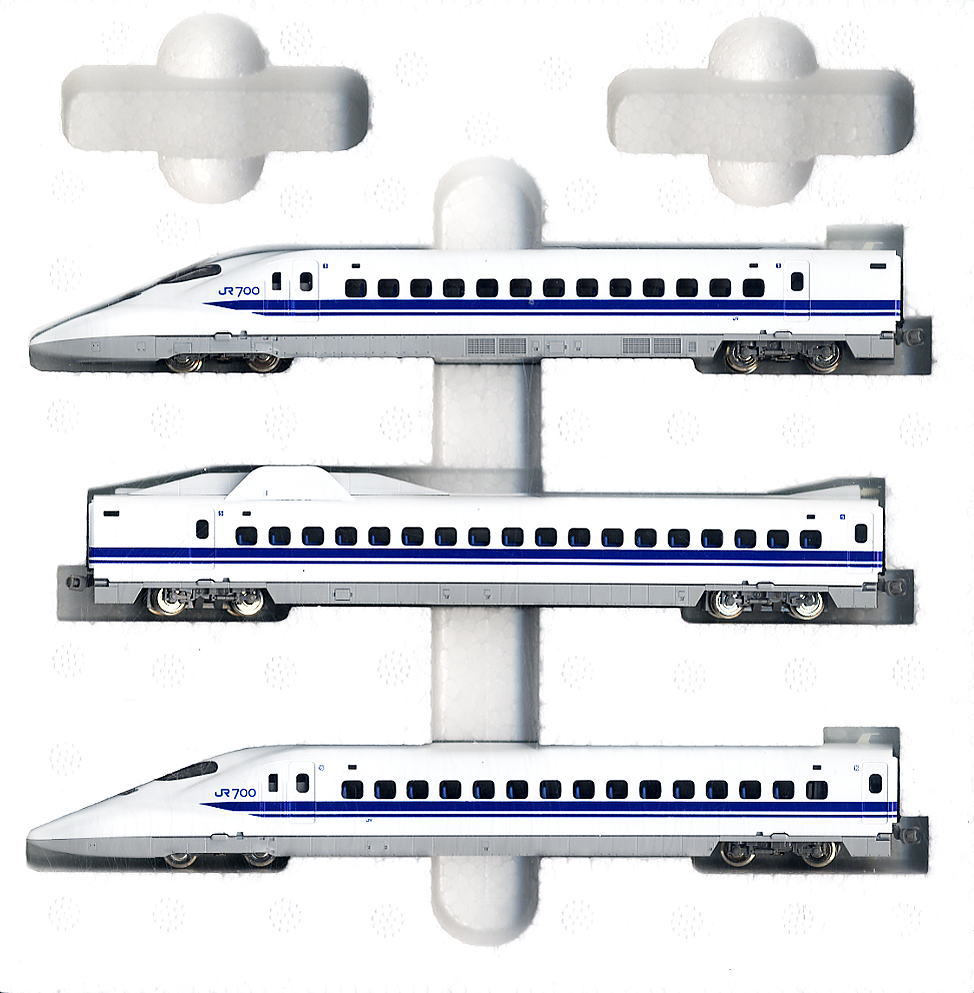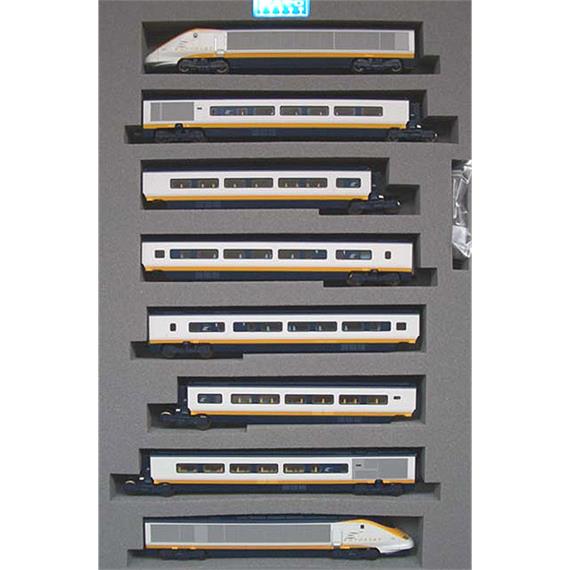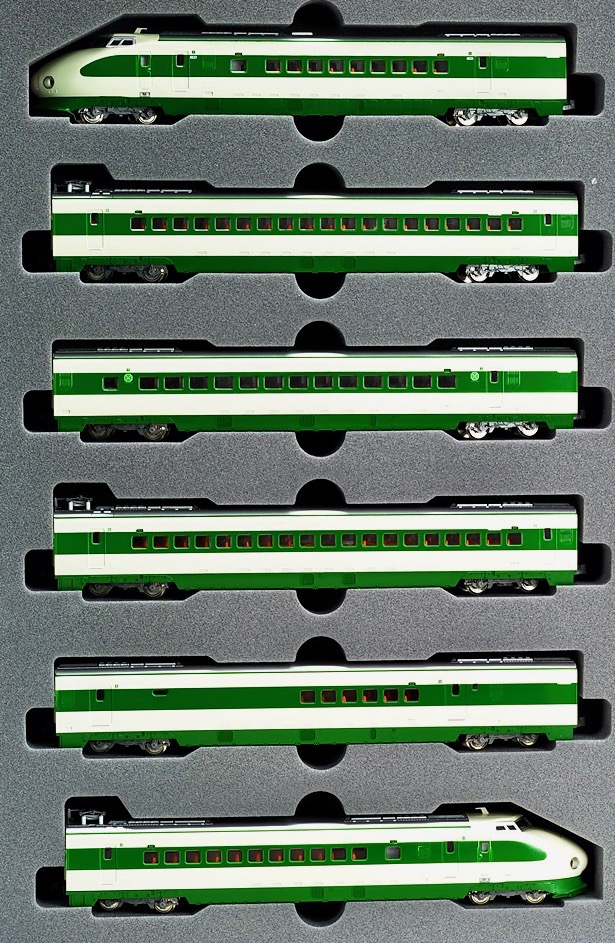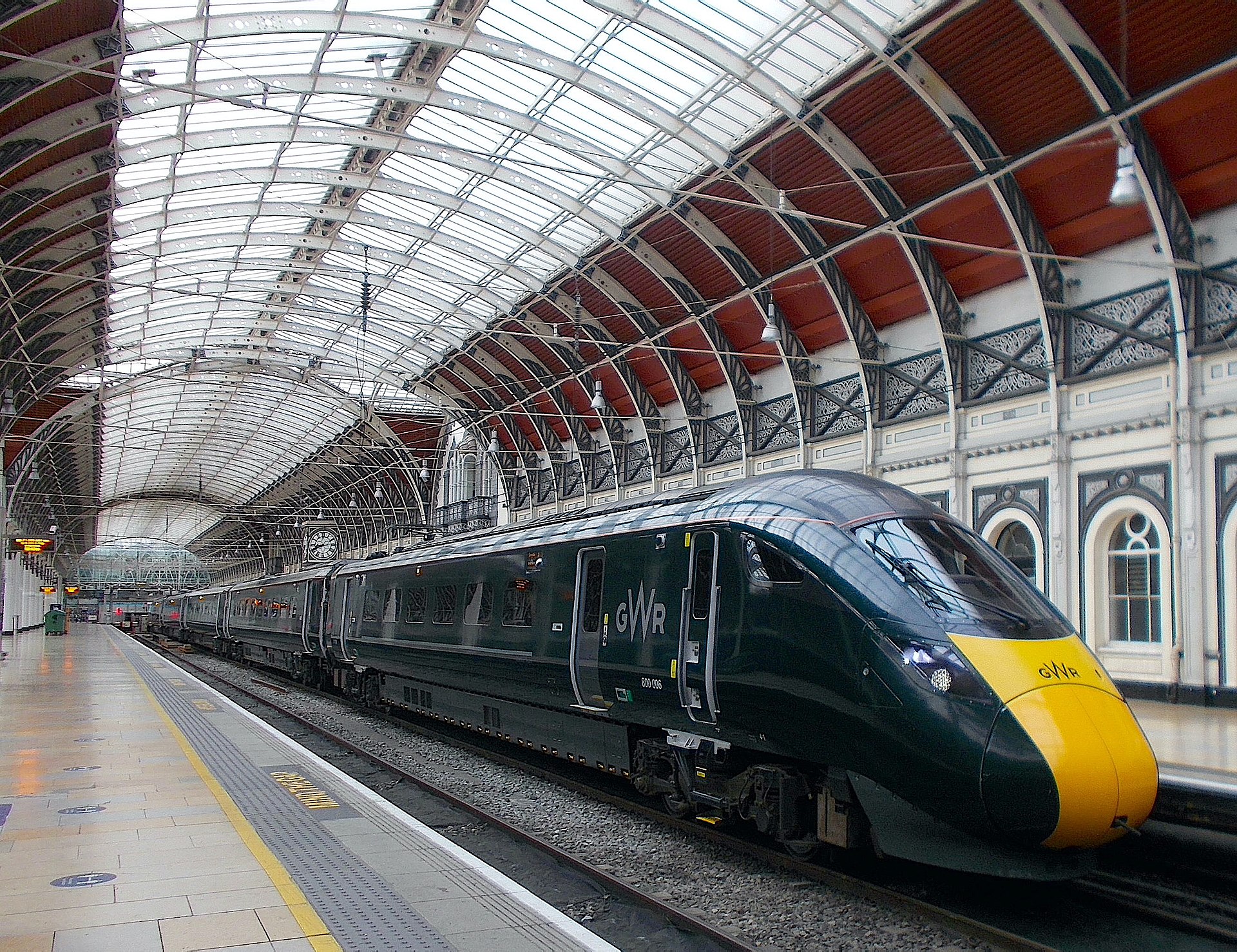Model Information: Model introduced in 2021.
- Prototype: GWR-800021 / LNER-800209
- White LED, head/tail lights/ marker lamps are turn on
- Five (5) car set, motor in second car.
- The front car equipped with coupler (drawbar) to realize 10 car trains by coupling two sets.
- Flywheel, Disk brake, no traction tire with power car
- Minimum Turning Radius R282mm
- Prototype: GWR-800021 / LNER-800209
- White LED, head/tail lights/ marker lamps are turn on
- Five (5) car set, motor in second car.
- The front car equipped with coupler (drawbar) to realize 10 car trains by coupling two sets.
- Flywheel, Disk brake, no traction tire with power car
- Minimum Turning Radius R282mm
DCC Information: DCC available. Requires Kato decoders EM13 (for power car) and FL12 (2x for end cars).
Can also be equipped with Kato interior lights (11-211/11-212).
Can also be equipped with Kato interior lights (11-211/11-212).
Prototype History: The British Rail Class 800 Intercity Express Train (GWR) or Azuma (LNER) first started its operation as the successor of the diesel high speed train “HST” (BR Class 43), and now runs on mainlines in the UK, for GWR (Great Western Railway) and LNER (London North Eastern Railway). It is a bi-mode electric-diesel vehicle introduced on “Intercity Express Program” (IEP) and installed with state of the art equipment. As a major feature, the train collects power through the pantographs in electrified areas and uses diesel engine or motor driven by power supplied from the generator in non-electrified areas enabling the operation regardless whether it is an electrified or non-electrified district.
Based on the Hitachi A-train design, the trains were built by Hitachi between 2014 and 2018. The trains were assembled at the Hitachi Newton Aycliffe (UK) facility, alongside the related Class 801, from bodyshells shipped from the Kasado plant in Japan. As well as resembling the Class 801, the units are also very similar to the Class 802 units, which have uprated diesel engines and larger fuel tanks. Class 800 is characterized by the body squeezed near the bottom to match the UK railways clearance limit and the yellow pattern on the top car front to enhance visibility.
From Wikipedia
Based on the Hitachi A-train design, the trains were built by Hitachi between 2014 and 2018. The trains were assembled at the Hitachi Newton Aycliffe (UK) facility, alongside the related Class 801, from bodyshells shipped from the Kasado plant in Japan. As well as resembling the Class 801, the units are also very similar to the Class 802 units, which have uprated diesel engines and larger fuel tanks. Class 800 is characterized by the body squeezed near the bottom to match the UK railways clearance limit and the yellow pattern on the top car front to enhance visibility.
From Wikipedia
Road Name History: The London and North Eastern Railway (LNER) was the second largest (after LMS) of the "Big Four" railway companies created by the Railways Act 1921 in Britain. It operated from 1 January 1923 until nationalisation on 1 January 1948. At that time, it was divided into the new British Railways' Eastern Region, North Eastern Region, and partially the Scottish Region.
The principal constituents of the LNER were: Great Eastern Railway, Great Central Railway, Great Northern Railway, Great North of Scotland Railway, Hull and Barnsley Railway, North British Railway, North Eastern Railway.
The total route mileage was 6,590 miles (10,610 km). The North Eastern Railway had the largest route mileage of 1,757 miles (2,828 km), whilst the Hull and Barnsley Railway was 106.5 miles (171.4 km).
From Wikipedia
The principal constituents of the LNER were: Great Eastern Railway, Great Central Railway, Great Northern Railway, Great North of Scotland Railway, Hull and Barnsley Railway, North British Railway, North Eastern Railway.
The total route mileage was 6,590 miles (10,610 km). The North Eastern Railway had the largest route mileage of 1,757 miles (2,828 km), whilst the Hull and Barnsley Railway was 106.5 miles (171.4 km).
From Wikipedia
Brand/Importer Information: Kato Precision Railroad Models (関水金属株式会社 Sekisui Kinzoku Kabushikigaisha) is a Japanese manufacturer of model railroad equipment in N and HO scales. The Tokyo-based company manufactures models based on Japanese prototypes (such as the Shinkansen bullet train) for the Japanese market, North American prototypes for the North American market and European high-speed trains for European market.
The Kato (pronounced kah-toe) model railroad companies were founded by Yuji Kato, father of current president Hiroshi Kato, of the parent company Sekisui Kinzoku Co., Ltd.
The design and distribution of models for the North American market are handled by their U.S. subsidiary, Kato USA, located in Schaumburg, Illinois.
The design of special models for the European market is handled for some of them by their partner, Lemke, whereas the general distribution of Kato products in Europe is handled by NOCH; both companies are located in Germany.
As a result, some Kato European models are sold as Kato Lemke and others as Kato (alone).
The Kato (pronounced kah-toe) model railroad companies were founded by Yuji Kato, father of current president Hiroshi Kato, of the parent company Sekisui Kinzoku Co., Ltd.
The design and distribution of models for the North American market are handled by their U.S. subsidiary, Kato USA, located in Schaumburg, Illinois.
The design of special models for the European market is handled for some of them by their partner, Lemke, whereas the general distribution of Kato products in Europe is handled by NOCH; both companies are located in Germany.
As a result, some Kato European models are sold as Kato Lemke and others as Kato (alone).
Item created by: CNW400 on 2021-07-29 20:13:44. Last edited by Alain LM on 2021-12-30 05:25:46
If you see errors or missing data in this entry, please feel free to log in and edit it. Anyone with a Gmail account can log in instantly.
If you see errors or missing data in this entry, please feel free to log in and edit it. Anyone with a Gmail account can log in instantly.


